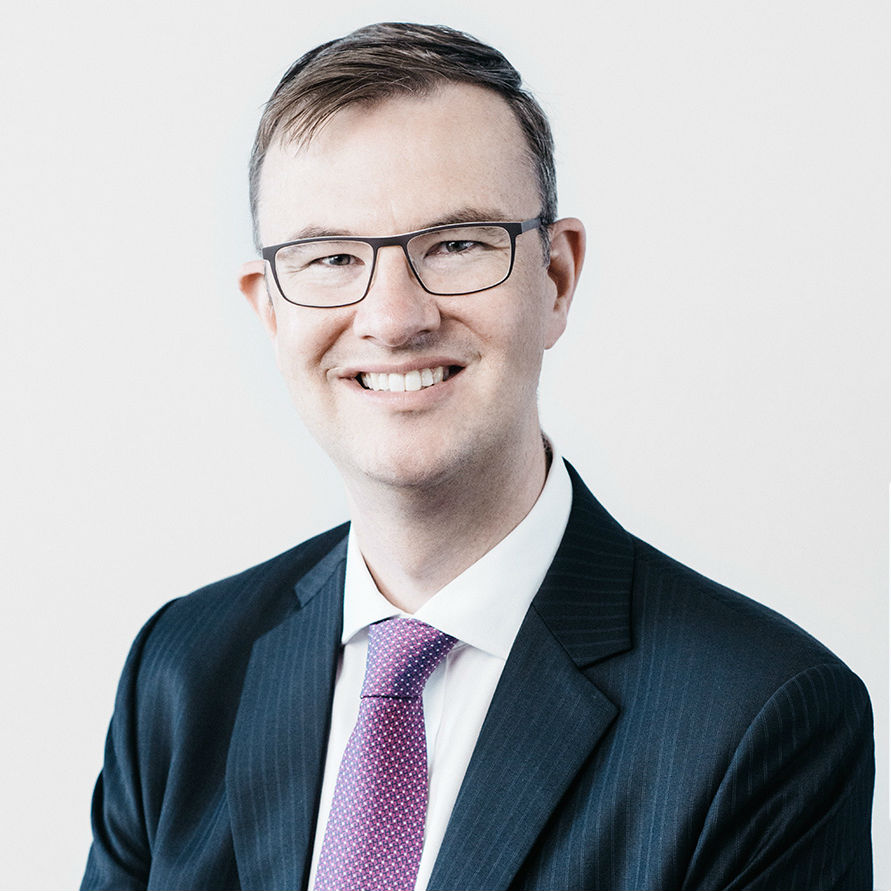Invest
Is there more to come?
Earlier in February, Martin Wolf, chief economics commentator at the Financial Times, said that it “takes no imagination to visualise these yields [bond yields in various markets] jumping massively”.
Is there more to come?
Earlier in February, Martin Wolf, chief economics commentator at the Financial Times, said that it “takes no imagination to visualise these yields [bond yields in various markets] jumping massively”.

(See Financial Times article, 14 February 2018, ‘A bit of fear is good for markets’). The chart below shows just how low US 10-year treasury yields are in the context of a 30-year history:

Source: Bloomberg
Yields have indeed increased to levels last seen in late 2013. But the backdrop is of course different now to what is was then, after the so-called ‘taper tantrum’:

- In 2013, the market worried about the removal of quantitative easing (QE) by the US Federal Reserve. The real economy was not ready for that adjustment. As markets realised this over the course of 2014, yields fell back towards the 2012-13 lows; and
- Now, the market is worrying less about the removal of QE and much more about the speed of conventional policy tightening, in the US and elsewhere. A synchronised global growth upswing continues to justify this policy shift.
It is therefore more likely now than in 2013 that bond markets exit this sell off with yields in a sustainably higher range.
Yields will not mean-revert to 1990s and 2000s levels though. Why? First, the neutral rate of interest has been falling for many years globally, meaning that on a secular basis interest rates are unlikely to rise too high.
Second, cyclical drivers don’t support sharply higher rates either: a weaker US dollar means the global growth upswing may soon become less synchronised, with export-led growth harder to sustain in some countries.
So we agree with Martin Wolf. It indeed takes little imagination to visualise yields rising further.
Our chart illustrates how low the starting point is. It does, however, take imagination (and skill) to determine whether “a massive rise” is a story for 2018. At Daintree, we don’t think it is.
Government bond yields will likely continue to drift higher in the coming months, settling into a higher range.
So although investing in fixed rate bonds in this environment may not be the best idea, floating-rate credit should continue to perform well.
Justin Tyler is portfolio manager at Daintree Capital.

Investment insights
Centuria announces senior internal promotions, strengthening leadership team for new property growth cycle
Centuria Capital Group (ASX: CNI or "Centuria") has strengthened its senior management structure with several internal promotions, effective from Monday, 15 April 2024. The new senior roles are part ...Read more

Investment insights
Institutions and wealth managers favour fixed income over equities, research shows
New research from Managing Partners Group (MPG), the international fund management group, shows professional investors believe fixed income is becoming more attractive than equities over the next 12 ...Read more

Investment insights
Gold prices soar to record high: Two surprising factors fueling the surge
Gold prices have hit a fresh record high, nearing $2,300 an ounce in Thursday trading, and while geopolitical tensions and expectations of interest rate cuts by the US Federal Reserve are commonly ...Read more

Investment insights
Alternative fund managers expect increased fines for regulatory breaches, survey reveals
A new study by Ocorian, a market leader in regulation and compliance services, has revealed that alternative fund managers anticipate a rise in fines for breaking regulations in their sectorsRead more

Investment insights
Institutional investors set to increase allocations to illiquid assets, MPG research reveals
A new study by international asset management company Managing Partners Group (MPG) has found that more than three-quarters (78%) of institutional investors and wealth managers plan to increase their ...Read more

Investment insights
Vanguard reduces management fee for its Australian Government Bond Index ETF
Vanguard Australia has announced a reduction in the management fee for its Vanguard Australian Government Bond Index ETF (ASX:VGB) by four basis points to 0.16% per annum, effective from Monday. Read more

Investment insights
Institutional investors and wealth managers recognise digital assets' role in diversification
A new global research study by London-based Nickel Digital Asset Management (Nickel), a regulated and award-winning digital assets hedge fund manager, reveals growing mainstream acceptance of digital ...Read more

Investment insights
Chinese and European brands dominate top 5 most valuable insurance brands: Brand Finance report
The latest Brand Finance Insurance 100 2024 report reveals that Chinese and European brands continue to dominate the ranking of the world's most valuable insurance brands. Read more

Investment insights
Centuria announces senior internal promotions, strengthening leadership team for new property growth cycle
Centuria Capital Group (ASX: CNI or "Centuria") has strengthened its senior management structure with several internal promotions, effective from Monday, 15 April 2024. The new senior roles are part ...Read more

Investment insights
Institutions and wealth managers favour fixed income over equities, research shows
New research from Managing Partners Group (MPG), the international fund management group, shows professional investors believe fixed income is becoming more attractive than equities over the next 12 ...Read more

Investment insights
Gold prices soar to record high: Two surprising factors fueling the surge
Gold prices have hit a fresh record high, nearing $2,300 an ounce in Thursday trading, and while geopolitical tensions and expectations of interest rate cuts by the US Federal Reserve are commonly ...Read more

Investment insights
Alternative fund managers expect increased fines for regulatory breaches, survey reveals
A new study by Ocorian, a market leader in regulation and compliance services, has revealed that alternative fund managers anticipate a rise in fines for breaking regulations in their sectorsRead more

Investment insights
Institutional investors set to increase allocations to illiquid assets, MPG research reveals
A new study by international asset management company Managing Partners Group (MPG) has found that more than three-quarters (78%) of institutional investors and wealth managers plan to increase their ...Read more

Investment insights
Vanguard reduces management fee for its Australian Government Bond Index ETF
Vanguard Australia has announced a reduction in the management fee for its Vanguard Australian Government Bond Index ETF (ASX:VGB) by four basis points to 0.16% per annum, effective from Monday. Read more

Investment insights
Institutional investors and wealth managers recognise digital assets' role in diversification
A new global research study by London-based Nickel Digital Asset Management (Nickel), a regulated and award-winning digital assets hedge fund manager, reveals growing mainstream acceptance of digital ...Read more

Investment insights
Chinese and European brands dominate top 5 most valuable insurance brands: Brand Finance report
The latest Brand Finance Insurance 100 2024 report reveals that Chinese and European brands continue to dominate the ranking of the world's most valuable insurance brands. Read more






